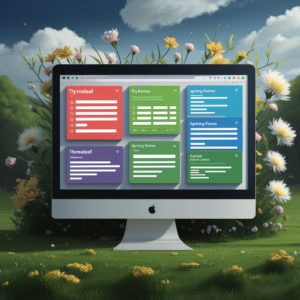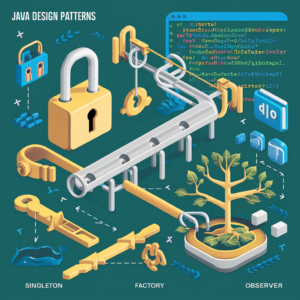In the evolving landscape of software development, microservices architecture and GraphQL have emerged as two powerful paradigms that can revolutionize how we build and interact with APIs. When combined, they offer a modern approach to API design that enhances flexibility, performance, and developer experience. This article explores how microservices and GraphQL can work together, offering practical examples to illustrate their benefits.
Understanding Microservices
Microservices architecture is a design pattern where a software application is composed of small, independent services that communicate over a network. Each service is responsible for a specific piece of functionality and can be developed, deployed, and scaled independently. This architecture promotes flexibility and agility, making it easier to adapt to changing business requirements.
Key Benefits of Microservices
- Scalability: Services can be scaled independently based on demand.
- Flexibility: Teams can choose the most suitable technology stack for each service.
- Resilience: The failure of one service does not necessarily affect the entire system.
- Continuous Delivery: Services can be deployed independently, enabling faster releases.
Understanding GraphQL
GraphQL is a query language for APIs that was developed by Facebook and released in 2015. Unlike traditional REST APIs, which expose multiple endpoints for different types of data, GraphQL provides a single endpoint through which clients can request exactly the data they need. This approach minimizes over-fetching and under-fetching of data, improving performance and developer experience.
Key Benefits of GraphQL
- Efficient Data Fetching: Clients can specify exactly what data they need, reducing unnecessary data transfer.
- Single Endpoint: A single API endpoint serves all client requests, simplifying API management.
- Strongly Typed Schema: GraphQL APIs are defined by a schema that provides a clear contract between client and server.
- Evolving APIs: New fields can be added to a GraphQL API without affecting existing queries, making it easier to evolve the API over time.
Microservices and GraphQL: A Perfect Match
When microservices and GraphQL are combined, they complement each other in several ways:
- Unified API Gateway: GraphQL can serve as a unified API gateway, aggregating data from multiple microservices into a single response. This simplifies client interactions with the microservices architecture.
- Flexible Data Retrieval: GraphQL’s ability to allow clients to request specific data fields aligns well with the microservices philosophy of exposing only what is necessary.
- Efficient Data Handling: By reducing over-fetching and under-fetching, GraphQL optimizes data transfer between clients and microservices, enhancing performance.
- Decoupled Frontend and Backend: GraphQL provides a level of abstraction that decouples the frontend from the backend, allowing frontend teams to iterate quickly without waiting for backend changes.
Implementing GraphQL with Microservices: An Example
Let’s explore a practical example of integrating GraphQL with a microservices architecture.
Scenario: An E-commerce Application
Imagine you are building an e-commerce application with a microservices architecture. You have the following microservices:
- Product Service: Manages product data.
- User Service: Manages user accounts and profiles.
- Order Service: Handles order processing and history.
Each service has its own API, but you want to provide a unified interface for the frontend to interact with these services. Here’s where GraphQL comes into play.
Step 1: Define the GraphQL Schema
Start by defining the GraphQL schema that represents the data structure of your application. For our e-commerce example, the schema might look like this:
type Product {
id: ID!
name: String!
price: Float!
inStock: Boolean!
}
type User {
id: ID!
name: String!
email: String!
orders: [Order]
}
type Order {
id: ID!
product: Product!
quantity: Int!
total: Float!
}
type Query {
products: [Product]
user(id: ID!): User
orders(userId: ID!): [Order]
}
Step 2: Create Resolvers for Each Service
In GraphQL, resolvers are functions that handle fetching the data for each field in the schema. You will create resolvers for the Product, User, and Order fields, each calling the appropriate microservice API.
const resolvers = {
Query: {
products: async () => {
// Call the Product Service API to fetch products
const products = await fetch('http://product-service/products').then(res => res.json());
return products;
},
user: async (_, { id }) => {
// Call the User Service API to fetch user by ID
const user = await fetch(`http://user-service/users/${id}`).then(res => res.json());
return user;
},
orders: async (_, { userId }) => {
// Call the Order Service API to fetch orders for a user
const orders = await fetch(`http://order-service/orders?userId=${userId}`).then(res => res.json());
return orders;
},
},
User: {
orders: async (user) => {
// Fetch orders for the given user
const orders = await fetch(`http://order-service/orders?userId=${user.id}`).then(res => res.json());
return orders;
}
}
};
Step 3: Set Up the GraphQL Server
Next, set up a GraphQL server that uses the schema and resolvers to handle incoming requests.
const { ApolloServer } = require('apollo-server');
const typeDefs = require('./schema'); // The GraphQL schema defined above
const resolvers = require('./resolvers'); // The resolvers defined above
const server = new ApolloServer({ typeDefs, resolvers });
server.listen().then(({ url }) => {
console.log(`🚀 Server ready at ${url}`);
});
Step 4: Querying Data with GraphQL
With the GraphQL server in place, clients can now query data from multiple microservices with a single request. For example, to fetch a user’s profile along with their orders and product details, the client can send the following query:
query {
user(id: "123") {
name
email
orders {
product {
name
price
}
quantity
total
}
}
}
This query fetches data from the User Service, Order Service, and Product Service, all through a single GraphQL endpoint.
Conclusion
Combining microservices with GraphQL offers a powerful approach to API design, enabling flexible, efficient, and scalable interactions between clients and services. By unifying data from multiple microservices into a single, easy-to-use GraphQL endpoint, you can simplify client development and improve performance. As microservices and GraphQL continue to evolve, they will play an increasingly important role in modern software architecture.
Hashtags
#Microservices #GraphQL #APIDesign #SoftwareDevelopment #Ecommerce #BackendDevelopment #API #WebDevelopment #Scalability #TechnologyInnovation





